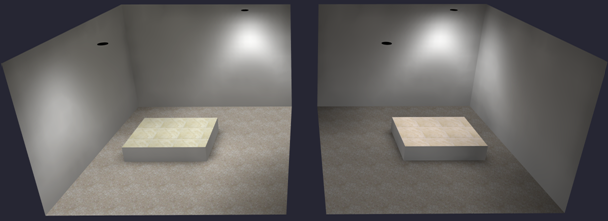
When initially selected, the reflectance and color of a texture are determined by the weighted average pixel color of the bitmapped image. This is displayed just below the selected texture in the selection dialog. The reflectance can be calculated from the RGB components of that color as shown below.
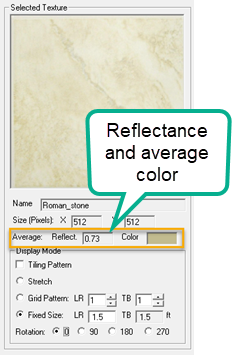
|
The relationship used by AGi32 between Color and Reflectance (including SRE) is based upon color weighting factors specified in ITU-R Recommendation BT-709, "Basic Parameter Values for the Studio and for International Programme Exchange (1990)," [formerly CCIR Rec. 709], ITU, 1211 Geneva 20, Switzerland. The weighting factors are representative of human visual sensitivity to the color phosphors used in contemporary computer monitors. Red band weight (R) = 0.2125 Green band weight (G) = 0.7154 Blue band weight (B) = 0.0721 Reflectance = (0.2125R + 0.7154G + 0.0721B) / 255 |
Changing the Reflectance and/or Color
The reflectance of a texture can be changed just after it is selected from the Room or Object dialogs, or after it has been applied using the Surface Edit command. When simply typing a new decimal value for the reflectance, the hue of the color will remain the same. The saturation and luminance will change in the color gamut to adjust for the different reflectance.
In the Object dialog:
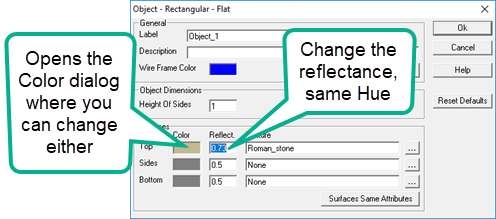
Using Surface Edit:
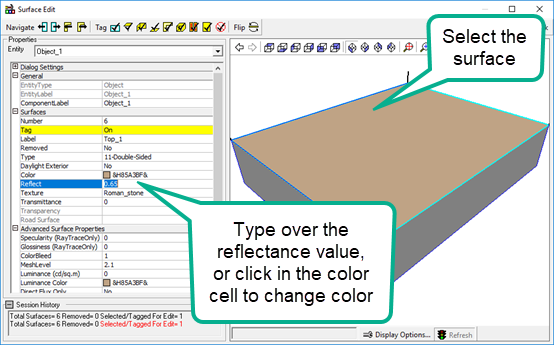
By clicking in the Color cell, you will open the Color and Reflectance dialog. Here you have complete flexibility over both color and reflectance.
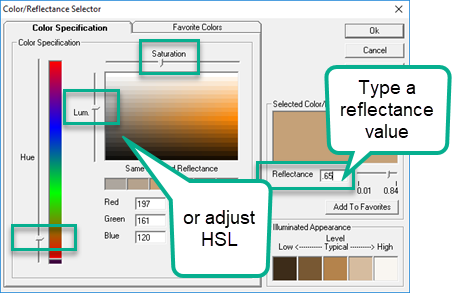
Example
In the image below the room on the left uses the carpet texture "Carpet 302"at a reflectance of 50%. The color hue has not been changed. The room on the right uses he same texture with the same hue but the reflectance is adjusted downward to 20%.
The table in the left room uses the standard tile texture "Roman Stone" with reflectance of 73%. In the room on the right the table texture is the same but the hue has been darkened and reflectance recalculated to 65%.
